TGF-beta Sma/Mab signaling mutations uncouple reproductive aging from somatic aging
- PMID: 20041217
- PMCID: PMC2791159
- DOI: 10.1371/journal.pgen.1000789
TGF-beta Sma/Mab signaling mutations uncouple reproductive aging from somatic aging
Abstract
Female reproductive cessation is one of the earliest age-related declines humans experience, occurring in mid-adulthood. Similarly, Caenorhabditis elegans' reproductive span is short relative to its total life span, with reproduction ceasing about a third into its 15-20 day adulthood. All of the known mutations and treatments that extend C. elegans' reproductive period also regulate longevity, suggesting that reproductive span is normally linked to life span. C. elegans has two canonical TGF-beta signaling pathways. We recently found that the TGF-beta Dauer pathway regulates longevity through the Insulin/IGF-1 Signaling (IIS) pathway; here we show that this pathway has a moderate effect on reproductive span. By contrast, TGF-beta Sma/Mab signaling mutants exhibit a substantially extended reproductive period, more than doubling reproductive span in some cases. Sma/Mab mutations extend reproductive span disproportionately to life span and act independently of known regulators of somatic aging, such as Insulin/IGF-1 Signaling and Dietary Restriction. This is the first discovery of a pathway that regulates reproductive span independently of longevity and the first identification of the TGF-beta Sma/Mab pathway as a regulator of reproductive aging. Our results suggest that longevity and reproductive span regulation can be uncoupled, although they appear to normally be linked through regulatory pathways.
Conflict of interest statement
The authors have declared that no competing interests exist.
Figures
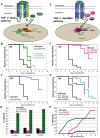
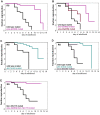

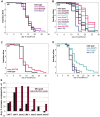
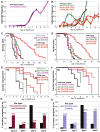

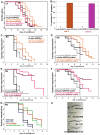
References
-
- Armstrong DT. Effects of maternal age on oocyte developmental competence. Theriogenology. 2001;55:1303–1322. - PubMed
-
- Das S, Blake D, Farquhar C, Seif MMW. Assisted hatching on assisted conception (IVF and ICSI). Cochrane Database of Systematic Reviews. 2009;2:CD001894. - PubMed
-
- Pauli SA, Berga SL, Shang W, Session DR. Current status of the approach to assisted reproduction. Pediatric Clinics of North America. 2009;56:467–488. - PubMed
-
- Palermo GD, Neri QV, Takeuchi T, Rosenwaks Z. ICSI: where we have been and where we are going. Semin Reprod Med. 2009;27:191–201. - PubMed
-
- De Mouzon J. IVF monitoring worldwide (ICMART). Human Reprod. 2006;21:i76.
Publication types
MeSH terms
Substances
LinkOut - more resources
Full Text Sources
Medical

